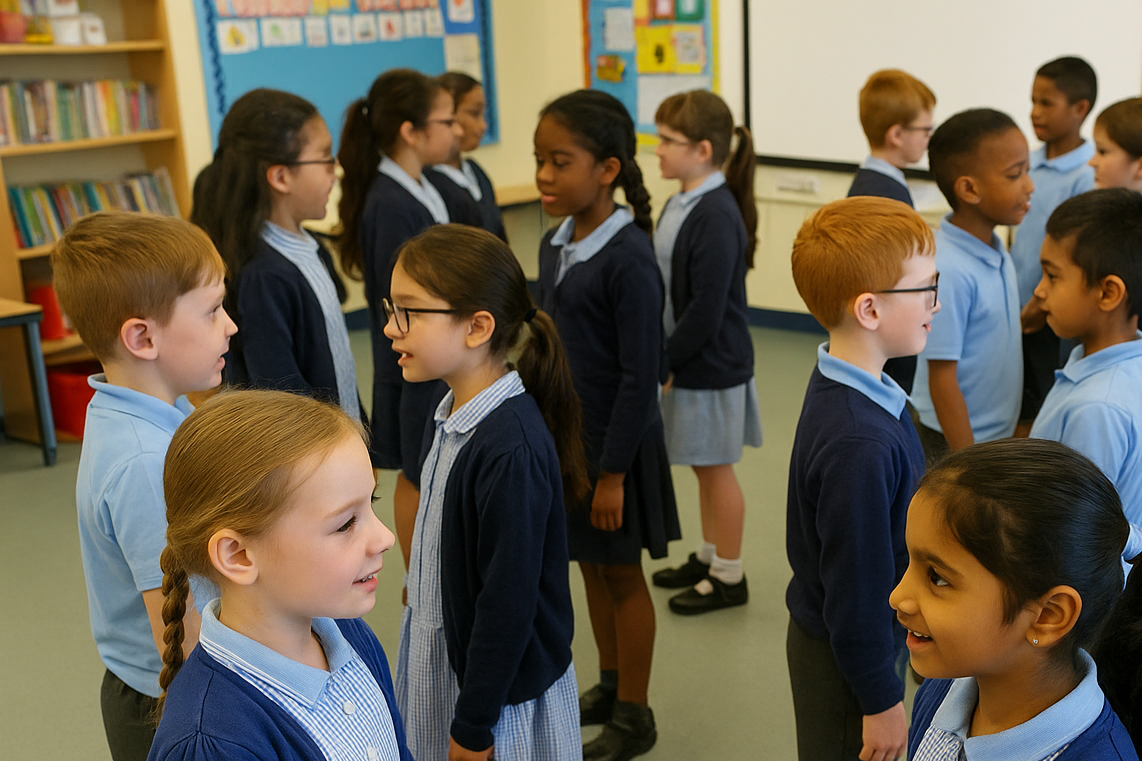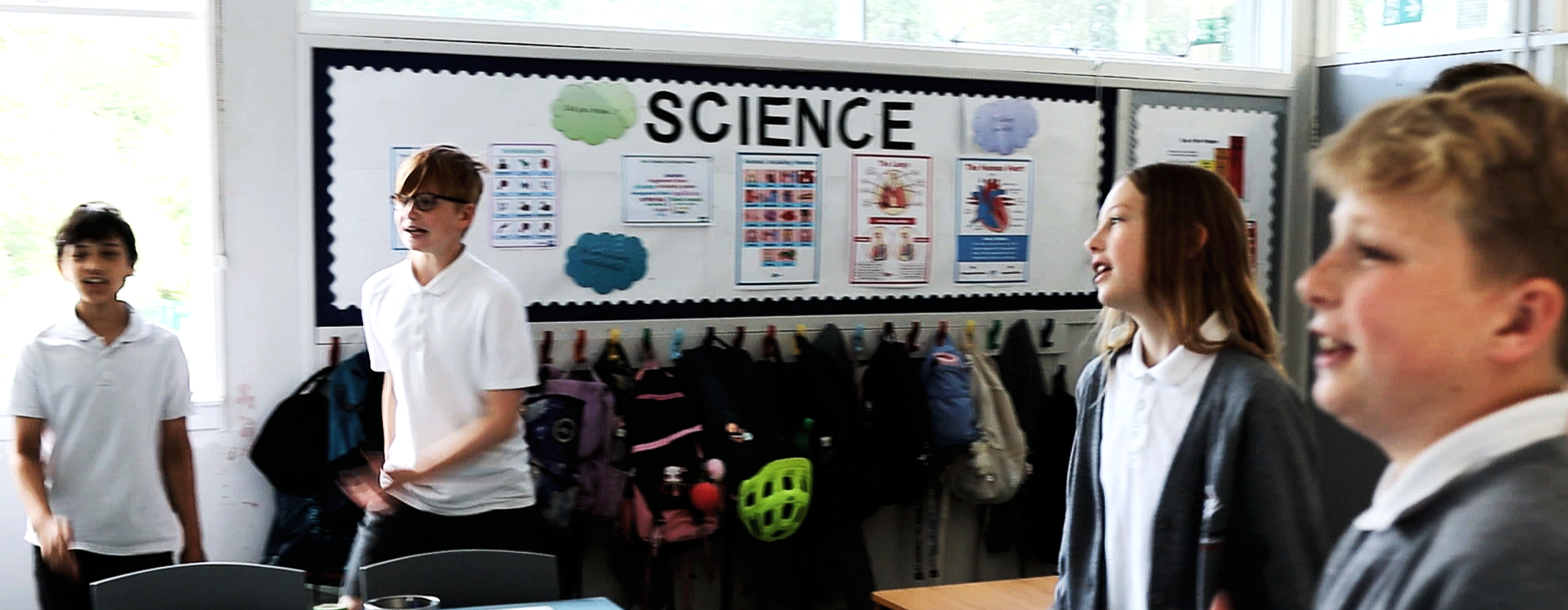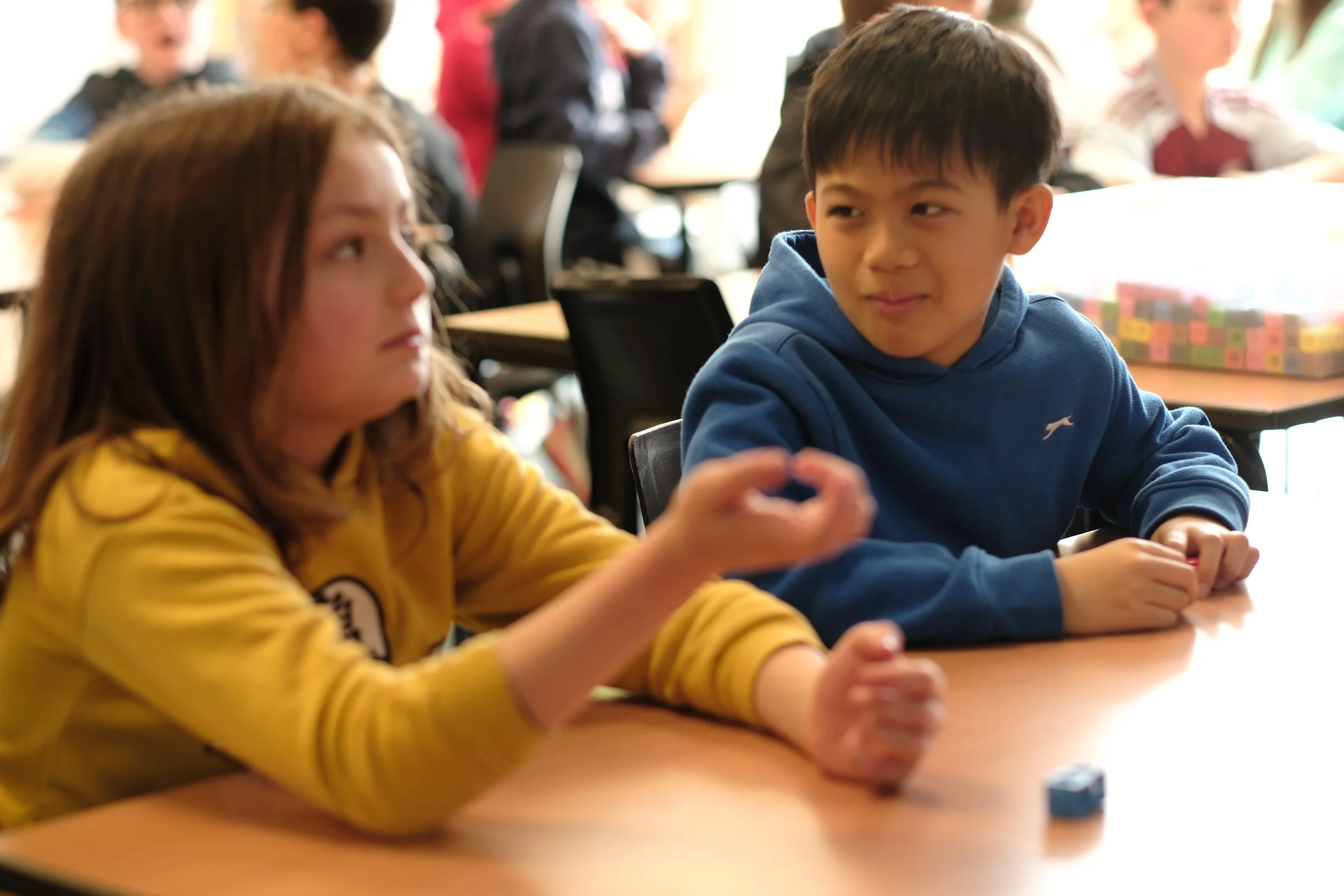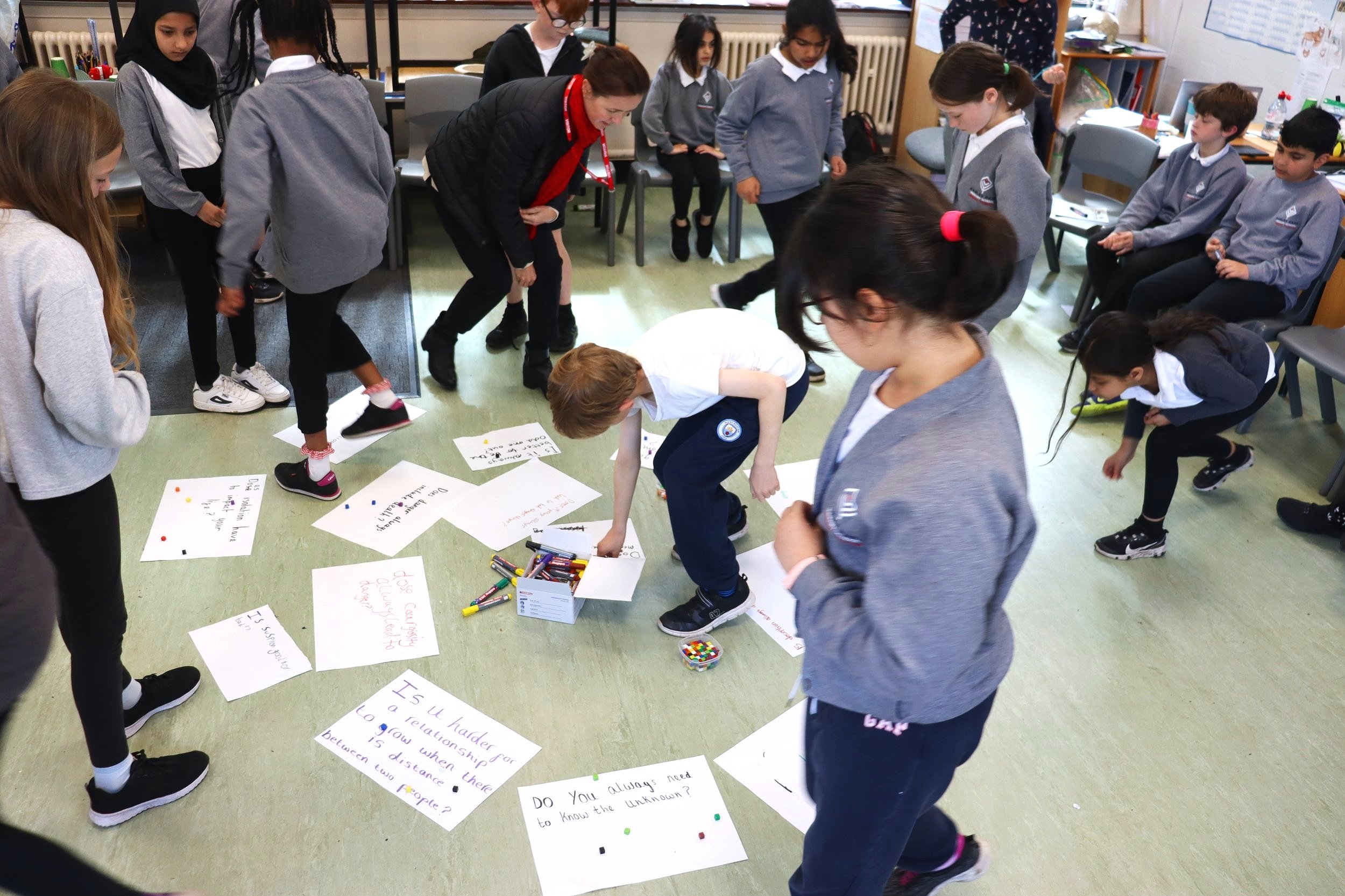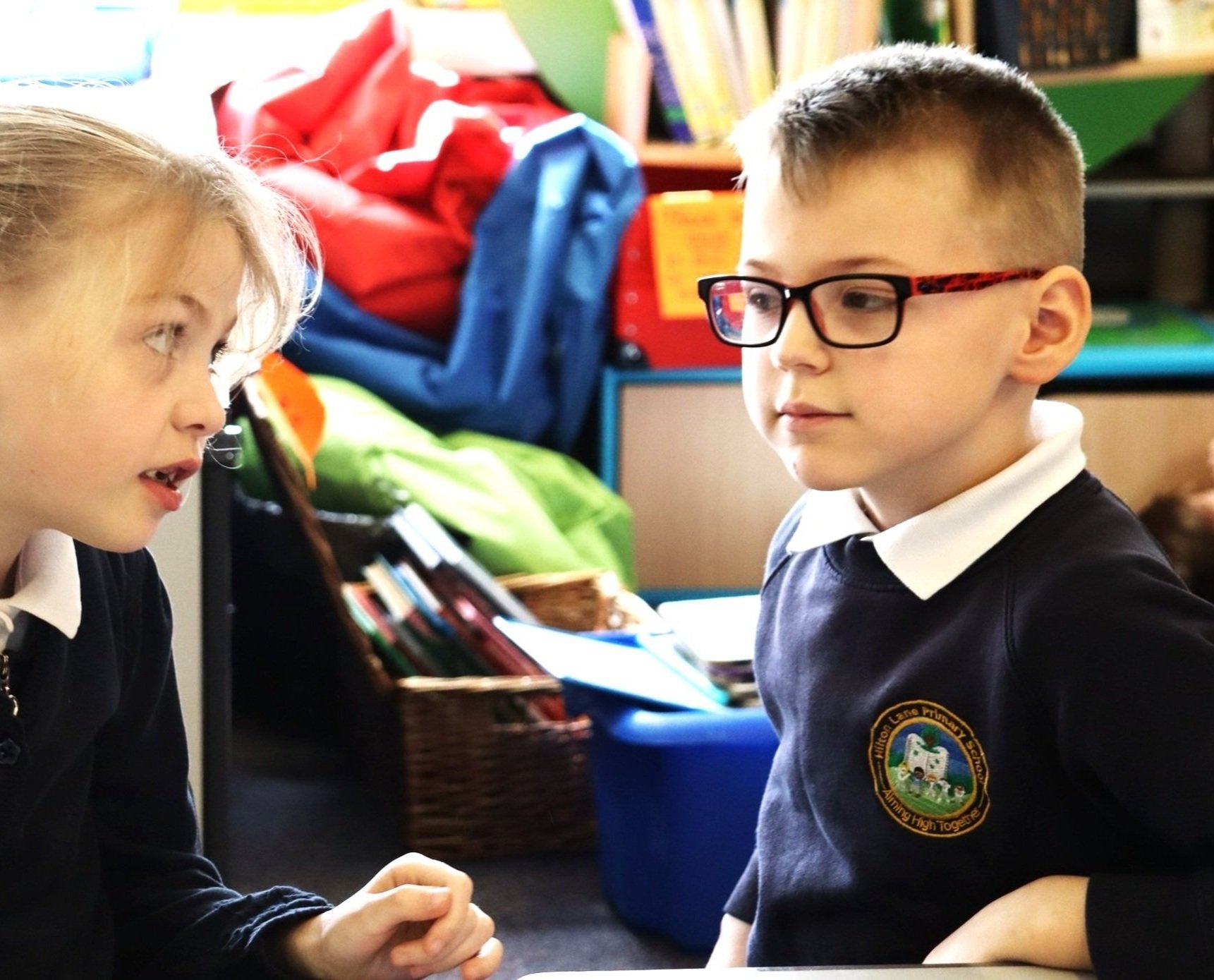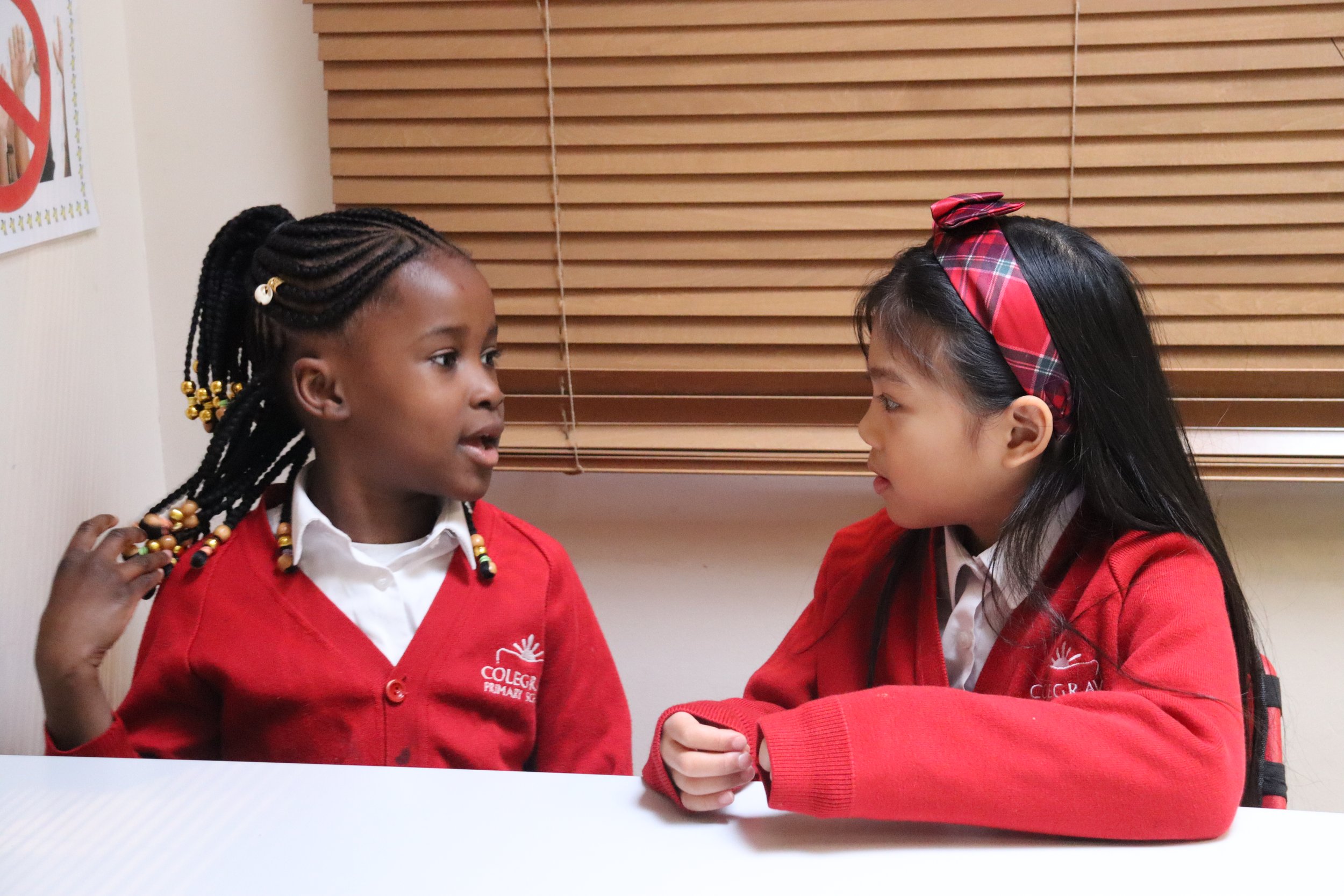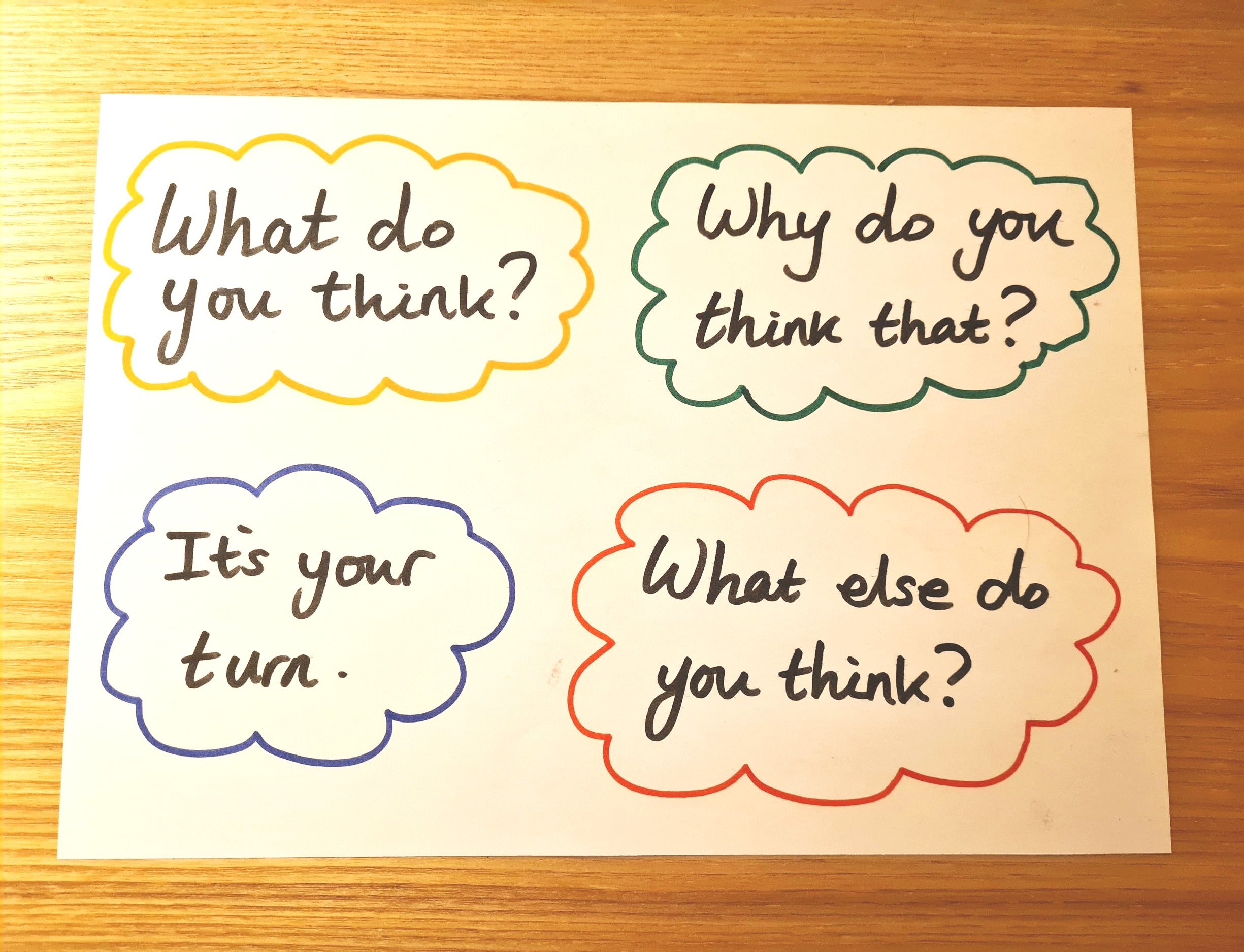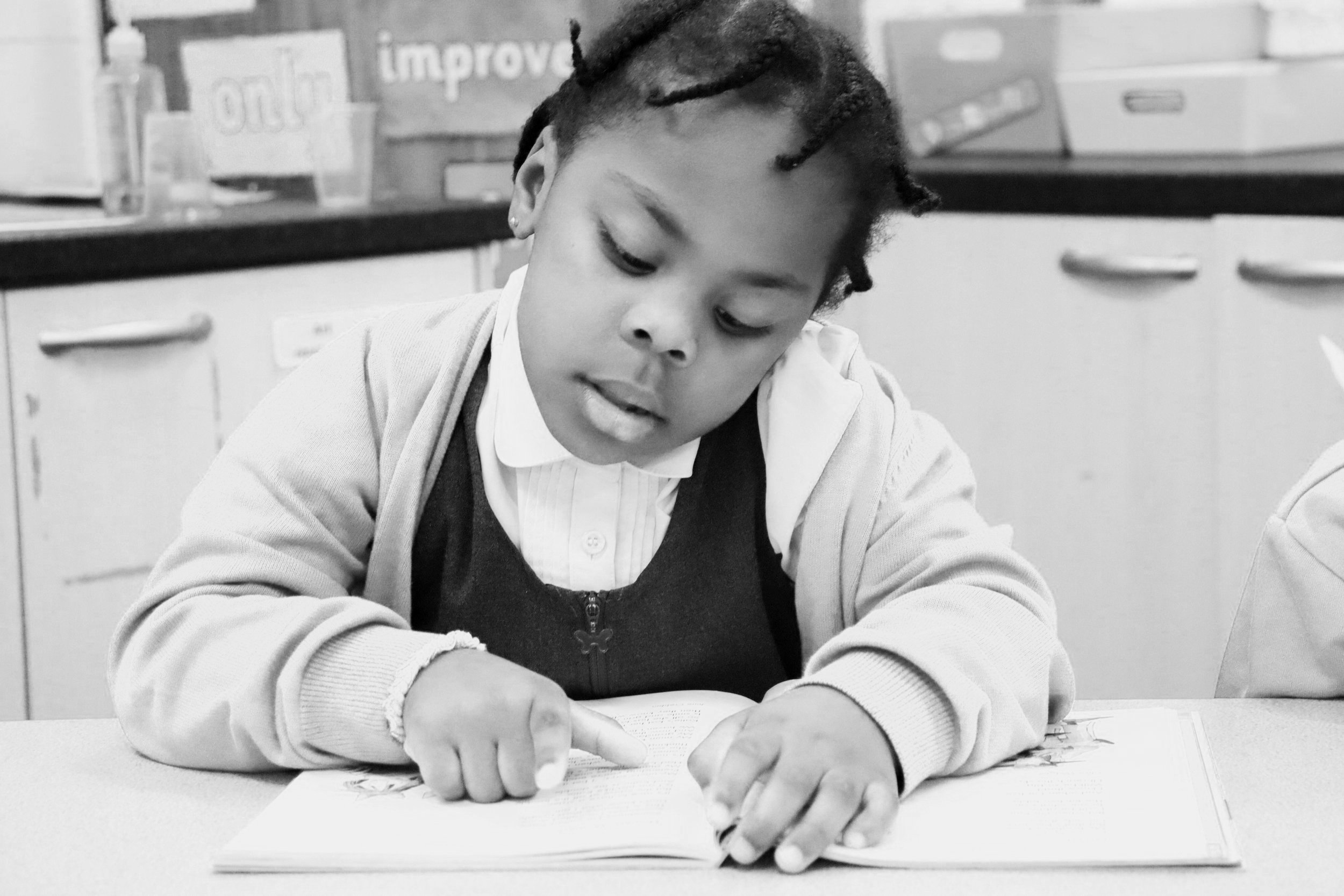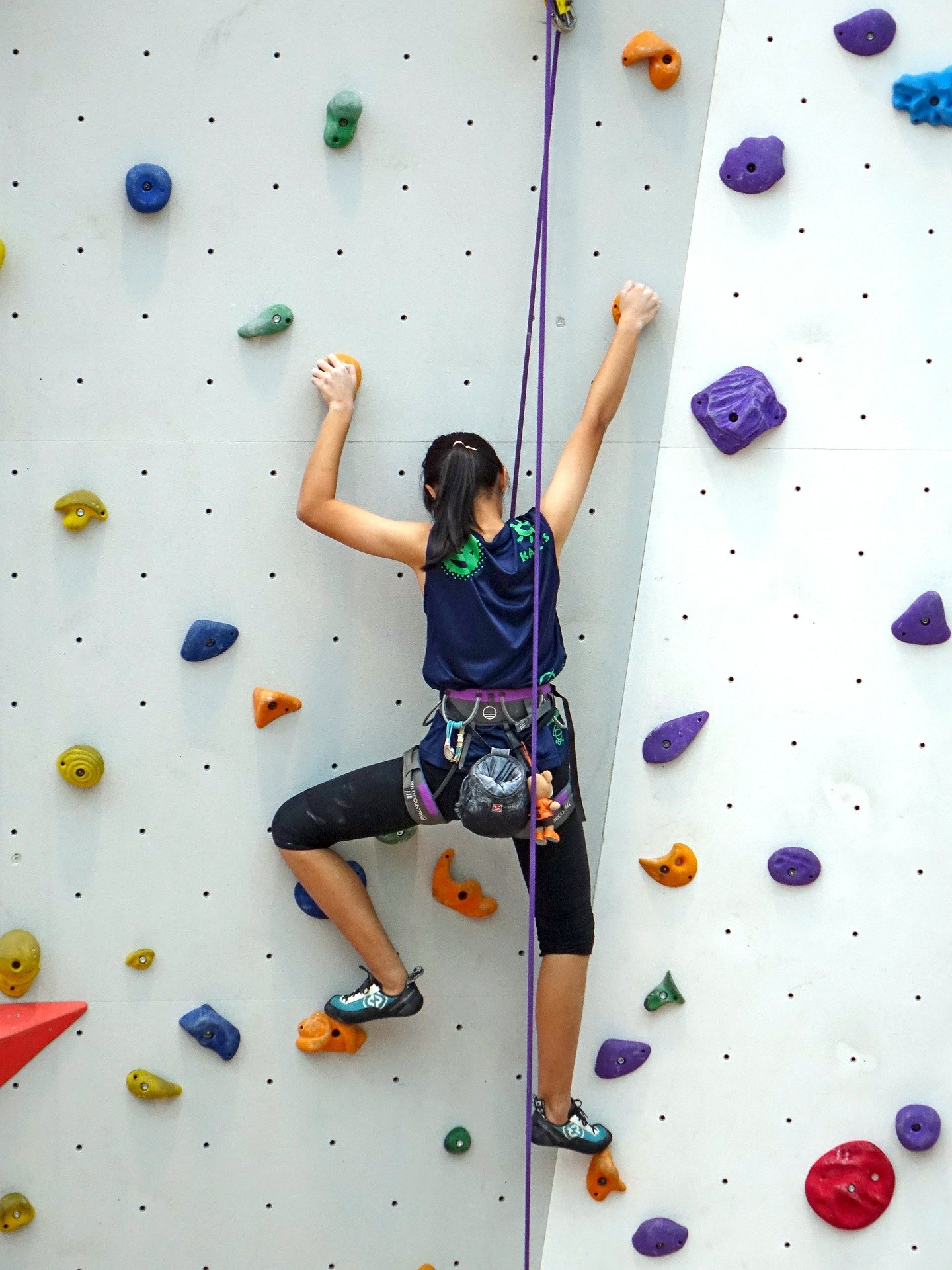
A teacher recently mentioned to me that her students often worked individually, despite being instructed to work collaboratively in pairs or groups.
One way to greatly increase the chance of collaboration is to only give one resource per group.
For example, a whiteboard, a laptop, a worksheet, equipment to make something, or cut-ups for a sorting exercise.
You may have noticed the effect of this already if you sometimes have to share out limited equipment! But don’t wait for those times – be intentional and do it every time you want them to work together.
Note: make sure any shared resources are big enough for everyone join in with – consider whether anything needs enlarging.
(See also Oracy for revision.)
A great way to get students used to talking to different people
A structure which develops speaking and listening, and can be used across the curriculum
Collaboration is much more likely when pupils have to do a shared piece of work
Give students opportunities to say and apply new vocabulary
How one teacher got everyone thinking, talking, listening and learning
Give pupils the skills and resilience to work with a diverse range of people
Ways to keep everyone engaged and develop the community of enquiry
A detailed description including building, helping, sharing and working together
Take a moment to check talk partner pairings to make sure no-one misses out on learning
Providing talk prompts to students can increase the quality of partner talk
Why giving out ‘talking objects’ is worth the hassle
Strategies to help as many pupils as possible access philosophical enquiry
The importance of taking a moment to look and listen carefully

